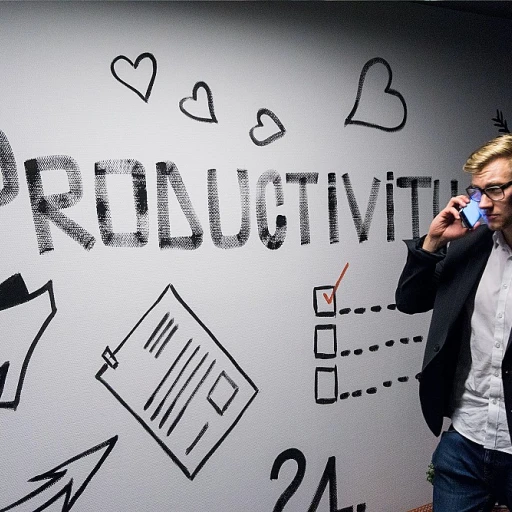
Understanding the Skills Gap
Recognizing the Disparity in Skills
The first step in establishing effective career development programs within corporations involves understanding the skills gap. This gap refers to the disconnect between the skills that employers need and what employees can currently offer. In today's fast-paced business environment, the reality is that roles are constantly evolving, and the need for skilled talent is more pressing than ever.
In most organizations, employee skills may not always align perfectly with the company's objectives. This misalignment can hinder both individual career growth and organizational success, especially when new roles emerge or existing roles require new competencies. By identifying these gaps, organizations can implement targeted programs that help employees reach their full potential and meet the company's evolving needs.
To effectively tackle this challenge, companies must assess their current workforce's capabilities and compare them with both current and future business goals. This ensures that development plans are crafted to address specific gaps and foster the potential for career advancement. These plans often incorporate a variety of training programs and learning opportunities aimed at bridging the gap.
Recognizing the skills disparity is merely the beginning, yet it's crucial for developing employee skills, leadership qualities, and fostering a culture of continuous learning. By addressing these gaps early on, companies are better equipped to provide meaningful career paths and growth opportunities for employees.
Identifying Organizational Needs
Assessing the Needs of Your Workforce
Understanding the skills gap requires a focused examination of both immediate and long-term organizational goals. This assessment lays the foundation for crafting tailored career development strategies. For a company to thrive, it is essential to identify the skills that align with its strategic vision. This involves a thorough evaluation of current employee competencies against the skills essential for future growth and business expansion. Such an analysis helps in pinpointing areas where improvements are necessary, paving the way for effective employee growth.- Analyze Job Roles: Start by scrutinizing existing job roles to understand their core requirements. This process entails understanding what each job entails and the essential skills team members need to succeed. By identifying these, a company can better align its development plans with career paths that lead to career growth and personal advancement.
- Engage with Employees: Open communication with team members is key to understanding their perspectives on skill inadequacies. Employees often have unique insights into their own learning opportunities and obstacles. By fostering discussions, leadership can gather valuable information to bridge gaps effectively.
- Professional Development Surveys: Implement surveys to assess perceptions around career development and employee growth opportunities. These inputs guide organizations in designing mentorship programs and succession planning, ensuring a robust development pathway tailored to diverse career goals.
Designing a Tailored Career Development Program
Crafting a Custom Approach to Development
When it comes to designing a tailored career development program within an organization, businesses must first consider the unique needs of their employees. This can involve analyzing the skills required for different roles and identifying any gaps that may exist between employees' current capabilities and the competencies needed for future success. Once these key areas are understood, the next step is to align employee goals with organizational objectives to foster professional growth and development.
Establishing clearly defined career paths and development plans is essential. These should provide growth opportunities and career advancement while outlining the necessary training, learning, and mentorship programs to help employees reach their potential. It's crucial to incorporate a variety of learning opportunities, such as mentorship, on-the-job training, workshops, and continuous education courses, to cater to diverse learning preferences.
Moreover, a customized development plan should take into consideration the different stages of an employee's career journey. For instance, early career professionals may benefit from foundational training programs, while more seasoned employees could be offered leadership development and succession planning initiatives. These tailored programs not only promote career growth but also enhance employee engagement and retention.
At the heart of crafting an effective development program is the integration of feedback mechanisms. This involves regularly assessing the effectiveness of the initiatives and adjusting them to better meet the evolving needs of both the company and its employees. By focusing on continuous improvement and adapting to feedback, organizations can ensure their development efforts remain relevant and impactful.
To learn more about enhancing workforce skills, consider exploring insights on collaborative learning platforms, which can significantly contribute to a company's long-term success.
Implementing Training and Development Initiatives
Effective Rollout of Training and Development Initiatives
- Aligning Programs with Career Goals: The initial step in implementing training initiatives is to connect them with the career goals and aspirations of employees. By focusing on the desired professional and personal growth objectives, organizations can craft training modules that truly help employees progress along their declared career paths.
- Customization to Meet Business Needs: Businesses must tailor training programs to their unique organizational objectives. This involves a detailed exploration of the company's strategic priorities and aligning employee development plans accordingly. When programs meet both individual and organizational needs, the potential for impactful learning increases significantly.
- Promoting Leadership and Mentorship: An effective training initiative will foster leadership qualities and provide mentorship opportunities. Establishing mentorship programs where experienced team members guide less experienced employees ensures a transfer of knowledge and skills across different tiers of the business.
- Blending Learning Techniques: Equally important in a successful program implementation is the utilization of diverse learning techniques. By combining workshops, online courses, on-the-job training, and peer-to-peer coaching, organizations can cater to different learning styles and increase engagement among participants.
- Leveraging Technology for Training: The role of technology in executing training programs is critical. E-learning platforms and virtual labs are instrumental in providing scalable and flexible learning opportunities. This integration helps equip employees with the relevant skills needed for both current and future job requirements.
- Facilitating Continuous Feedback: Encouraging regular feedback from employees participating in training programs can reveal valuable insights, ensuring the continuous improvement of development programs. Such feedback loops create a dynamic learning environment and promote a culture of continuous improvement within the organization.
Measuring Success and Adjusting Programs
Evaluating the Effectiveness of Development Programs
Once your company has invested time and resources into crafting development programs for employees, it is crucial to examine their impact. Measuring the success of these initiatives helps ensure that the career growth objectives align effectively with organizational goals, while also facilitating employee personal growth.
Designing an effective system for monitoring and assessing these programs is paramount. Evaluation can take many forms, from quantitative metrics to personal feedback, each providing valuable insights into employees' career paths and the overall success of the development plan.
- Quantitative Measures: Analyze metrics such as improvement in job performance, enhanced skills, or the achievement of career goals. These indicators can be potent reflections of the professional development and growth opportunities realized by team members.
- Qualitative Feedback: Engage with employees to gather their perspectives on the training programs through surveys and interviews. These discussions can uncover vital information about the learning experiences, helping refine the initiative's approach.
Incorporating leadership feedback can further enrich the evaluation process. Leaders and managers, who are closely involved in mentoring and guiding team members, can provide insights into how the development program has supported the success of their employees.
Adjusting Programs for Long-Term Success
With evaluation results in hand, organizations need to iterate and fine-tune their employee development programs for sustained impact. It is important to remember that career development is not a static journey.
For a company to remain competitive, it should continuously adapt its programs to evolve with the business environment and the professional aspirations of its employees. Implementing adjustments based on evaluation findings ensures that the development program remains relevant and effective.
- Stay Aligned with Career Goals: Regular revisions of employee goals and aspirations should guide developmental adjustments, ensuring alignment with long-term career paths.
- Update Learning Opportunities: As industry demands shift, refreshing training workshops and mentorship programs keeps growth opportunities in step with new skills required in the marketplace.
Through ongoing measurement and refinement, organizations effectively support their employees’ career advancement, foster continued professional growth, and secure their own future success in the marketplace.












